A WEEK IN PUGLIA - PART TWO
OSTUNI
We pick up where we left off in A Week in Puglia – Part I with Ostuni, our final destination in Brindisi. A stunning medieval town, whitewashed and perched on a hilltop, Ostuni is a labyrinth of cobblestone streets best enjoyed over a day or two.
I highly recommend a guided tuk-tuk tour, as the history is both rich and unmissable. One of the first landmarks we visited was the Santa Maria Assunta Cathedral, a striking blend of Romanesque, Gothic, and Byzantine styles. Here we learned why the ornate rose window is glass-free, the meaning behind its intricate symbols, and why the church’s altar sits off-center.
Another gem is the Baroque Church of San Vito Martire—less opulent but highly unusual—now serving as an archaeological museum with artifacts dating back as far as 2,600 years.
Be sure to leave time to wander Ostuni’s maze of medieval streets, dotted with restaurants, boutiques, cafés, and lively bars. Every corner holds its own charm, making Ostuni an essential stop when visiting Puglia.



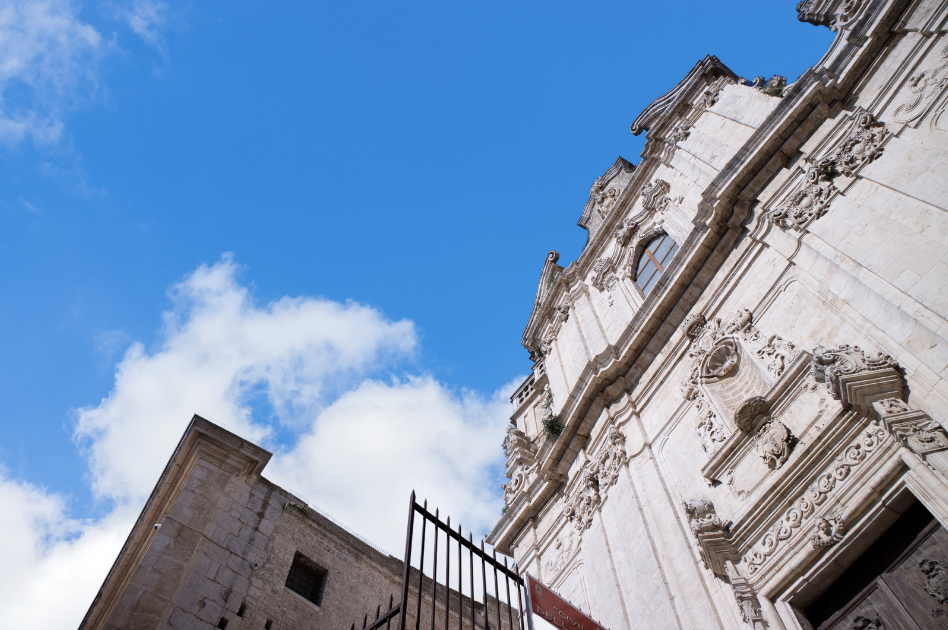


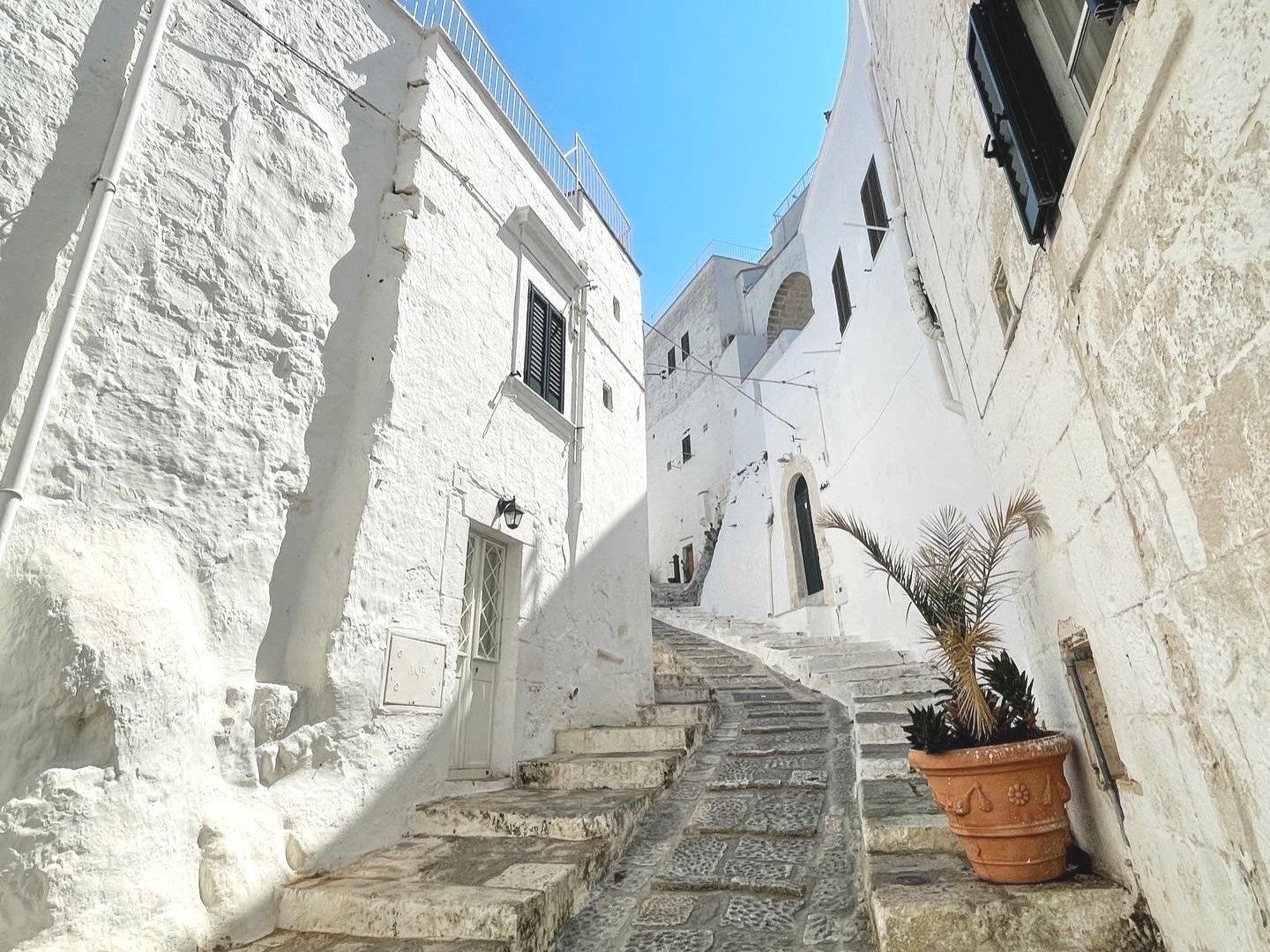
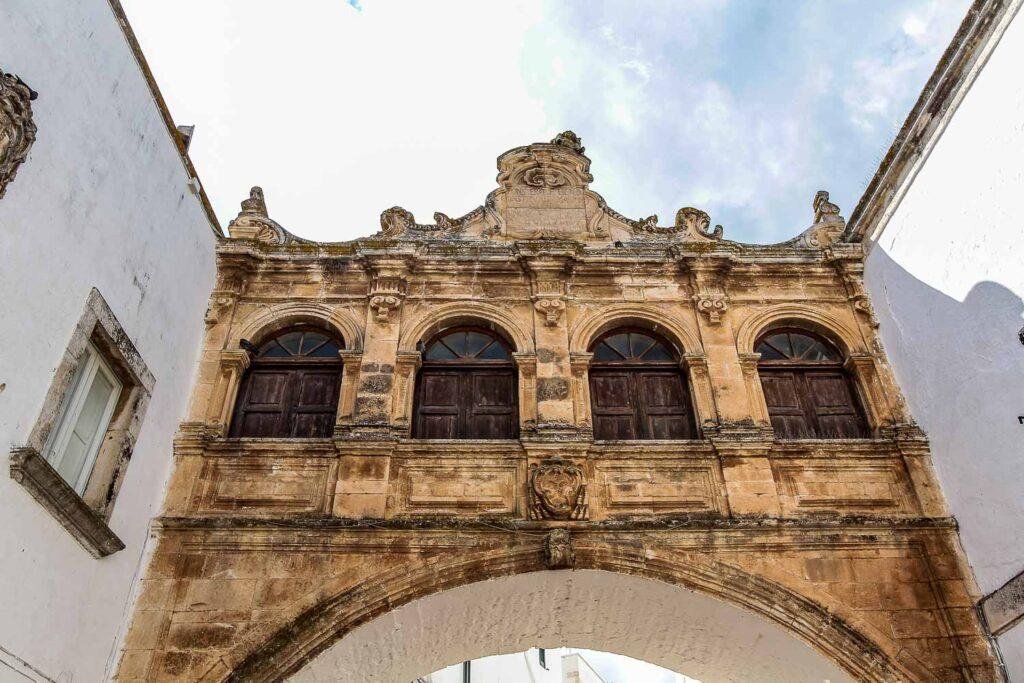
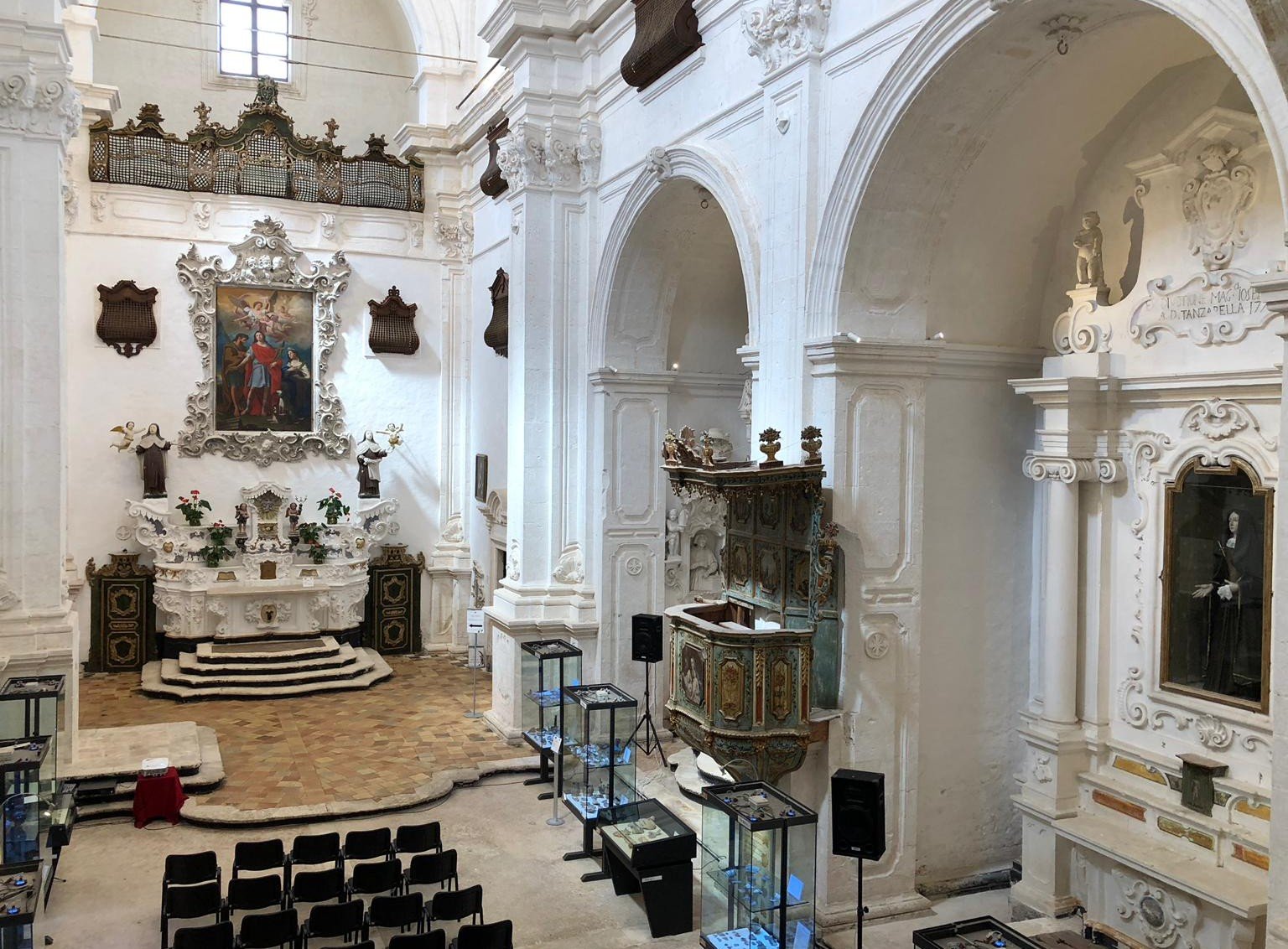
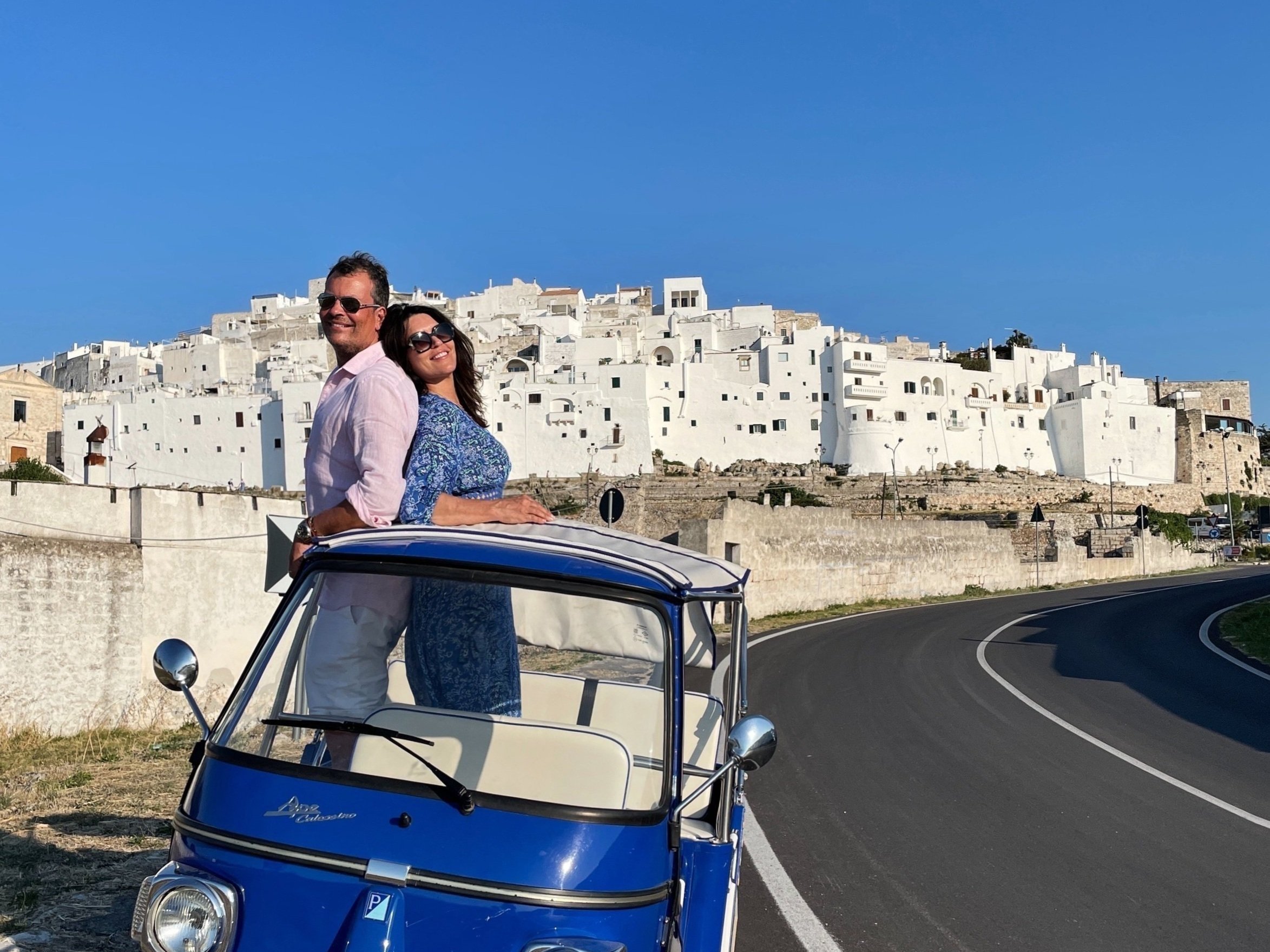
Puglia produces half of all the olive oil in Italy, so it’s no surprise the landscape stretches into miles upon miles of olive trees. On our way to Lecce, we stopped at Masseria Brancati, hoping to see Il Grande Vecchio (The Great Elder), believed to be the oldest olive tree in Italy—over 3,000 years old.
Unfortunately, the property wasn’t open for a full tour and tasting when we arrived. Still, we caught sight of the elder’s “cousin,” estimated at 2,000 years old, and marveled that these ancient trees still bear fruit.
If you plan a visit, call ahead to book a tour—you won’t want to miss it.
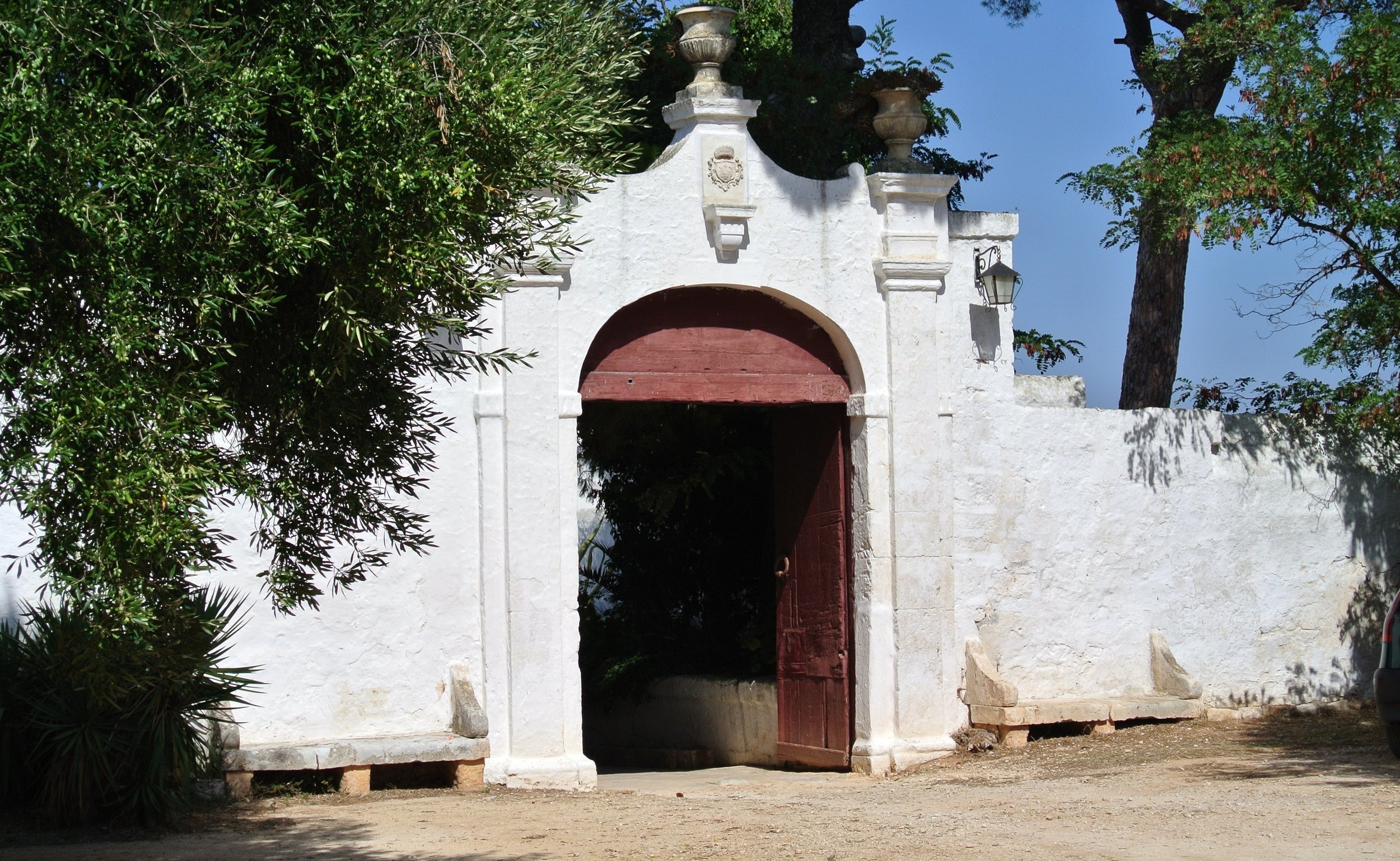


LECCE
Often hailed as “the Florence of southern Italy,” Lecce is a striking showcase of Baroque art and architecture. Its elegant amber hue is no accident: “Lecce stone” is a honey-colored, malleable limestone quarried locally and used throughout the city for centuries. The gentle stone shifts with the light, glowing differently from dawn to dusk, making Salento—the southernmost part of Puglia—unlike anywhere else in the world.
Our hotel was so well located that simply wandering the streets brought us face-to-face with landmark after landmark.
Basilica di Santa Croce: Calling this 17th-century church stunning hardly does it justice. Its elaborate façade is a masterpiece of Baroque detail, worth visiting both by day and again at dusk, when the stone takes on an entirely new character.
Piazza del Duomo: One of Lecce’s many beautiful limestone squares, it is home to the Cattedrale dell’Assunzione della Virgine, another essential stop in the city’s architectural crown.
Roman Amphitheatre: Like so many treasures in Italy, this ancient structure—dating to the 1st and 2nd centuries AD—was discovered by chance in the early 1900s. Today, its weathered tiers remain a vivid reminder of Lecce’s layered past.
Porta Napoli: A commanding defensive archway, flanked by four ornate columns and crowned with a pediment bearing the insignia of Charles V and Lecce.
Sedile: Near the amphitheatre in the city’s main square stands the Sedile, an exquisitely restored building that now houses Lecce’s Tourist Information office. Its clean lines and dignified presence contrast beautifully with the exuberance of the Baroque all around.

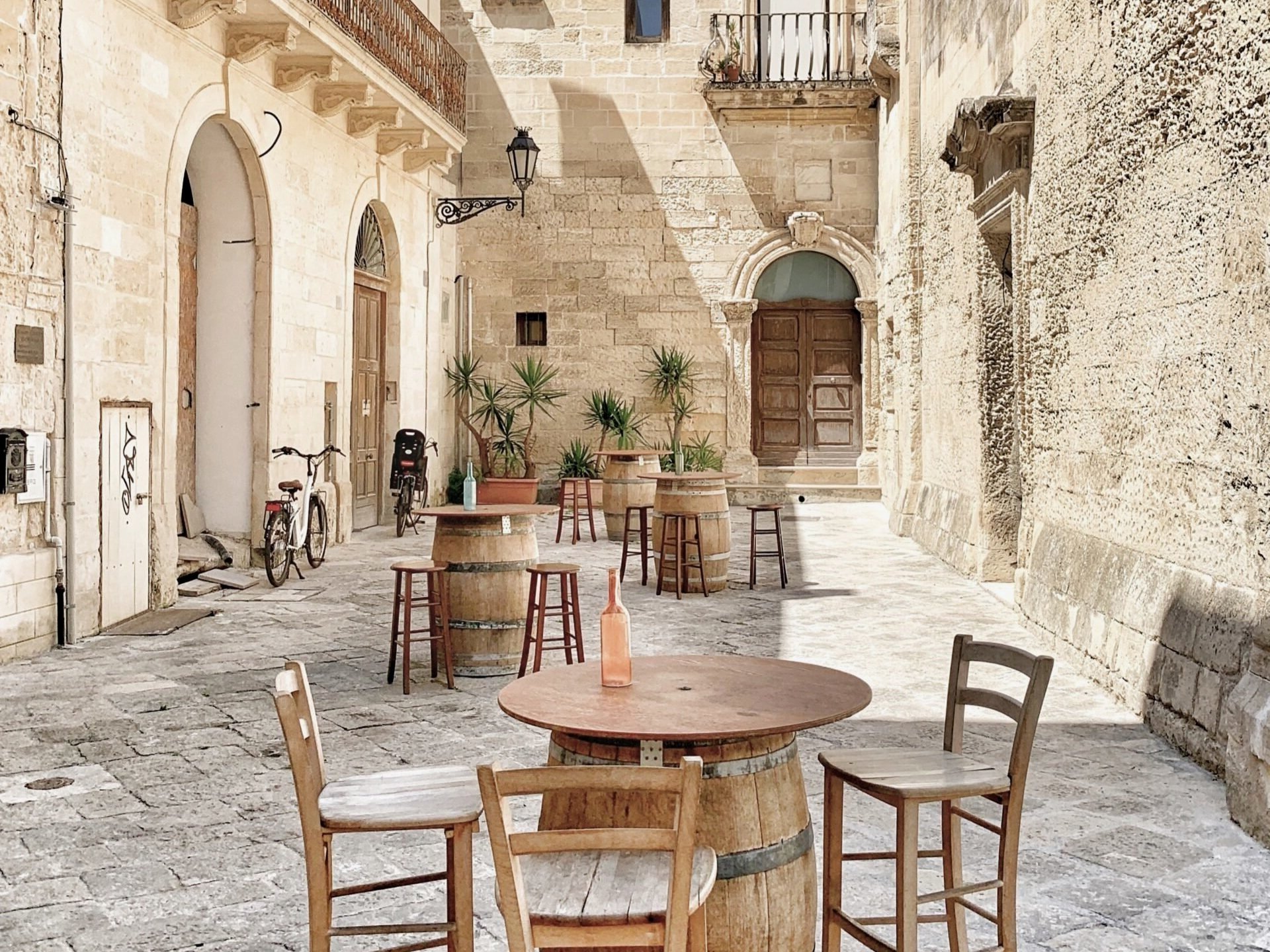
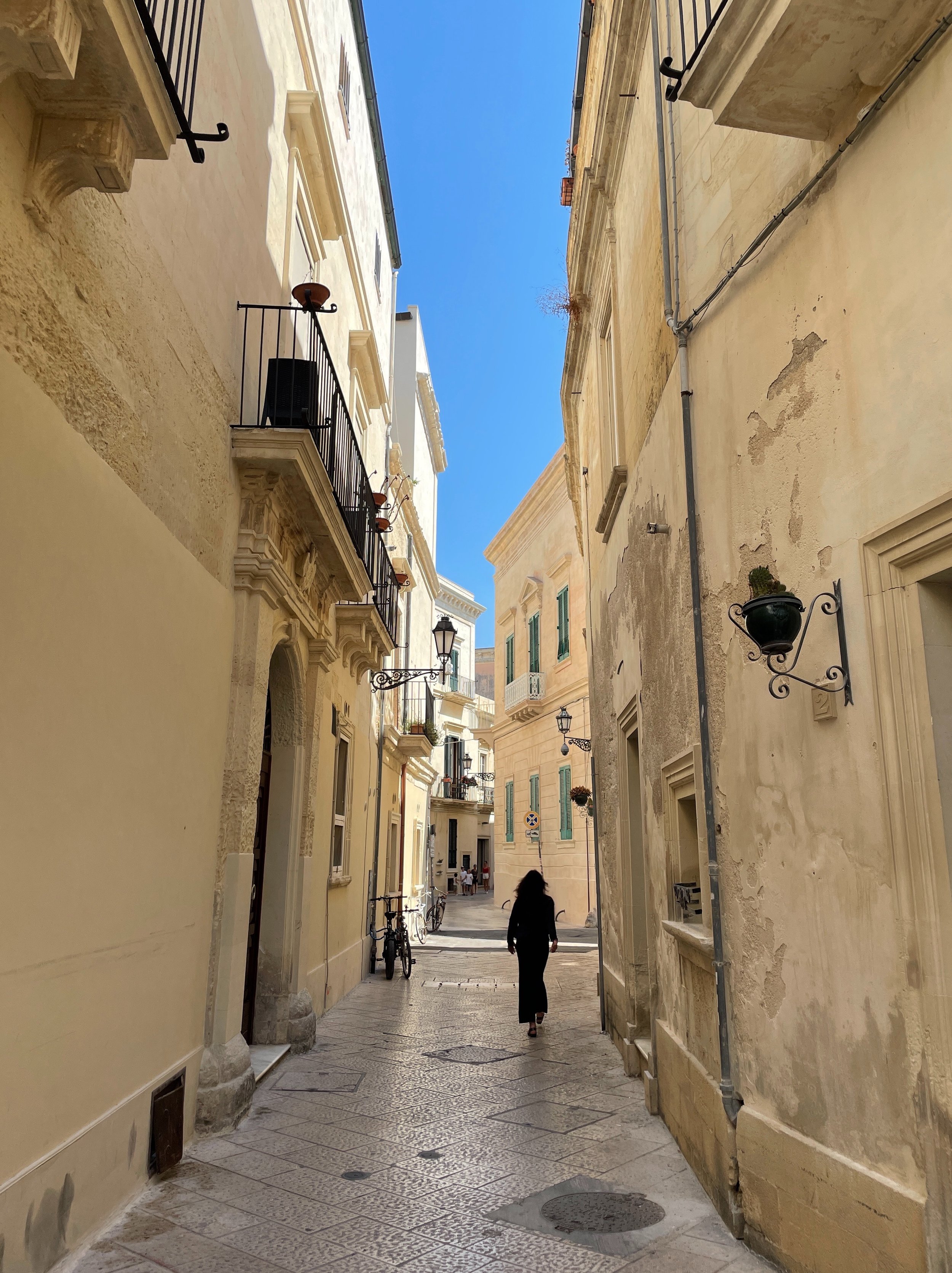
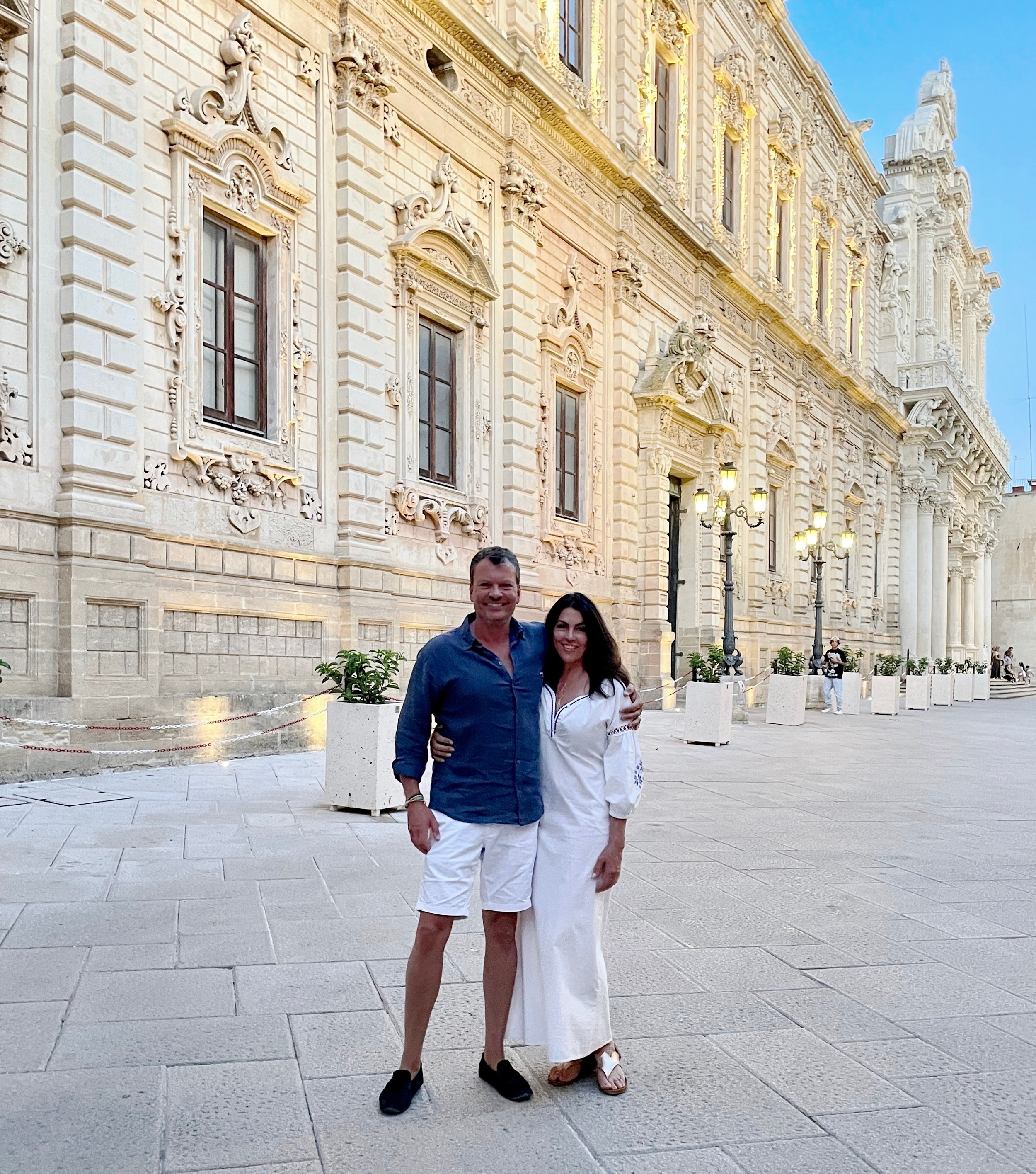
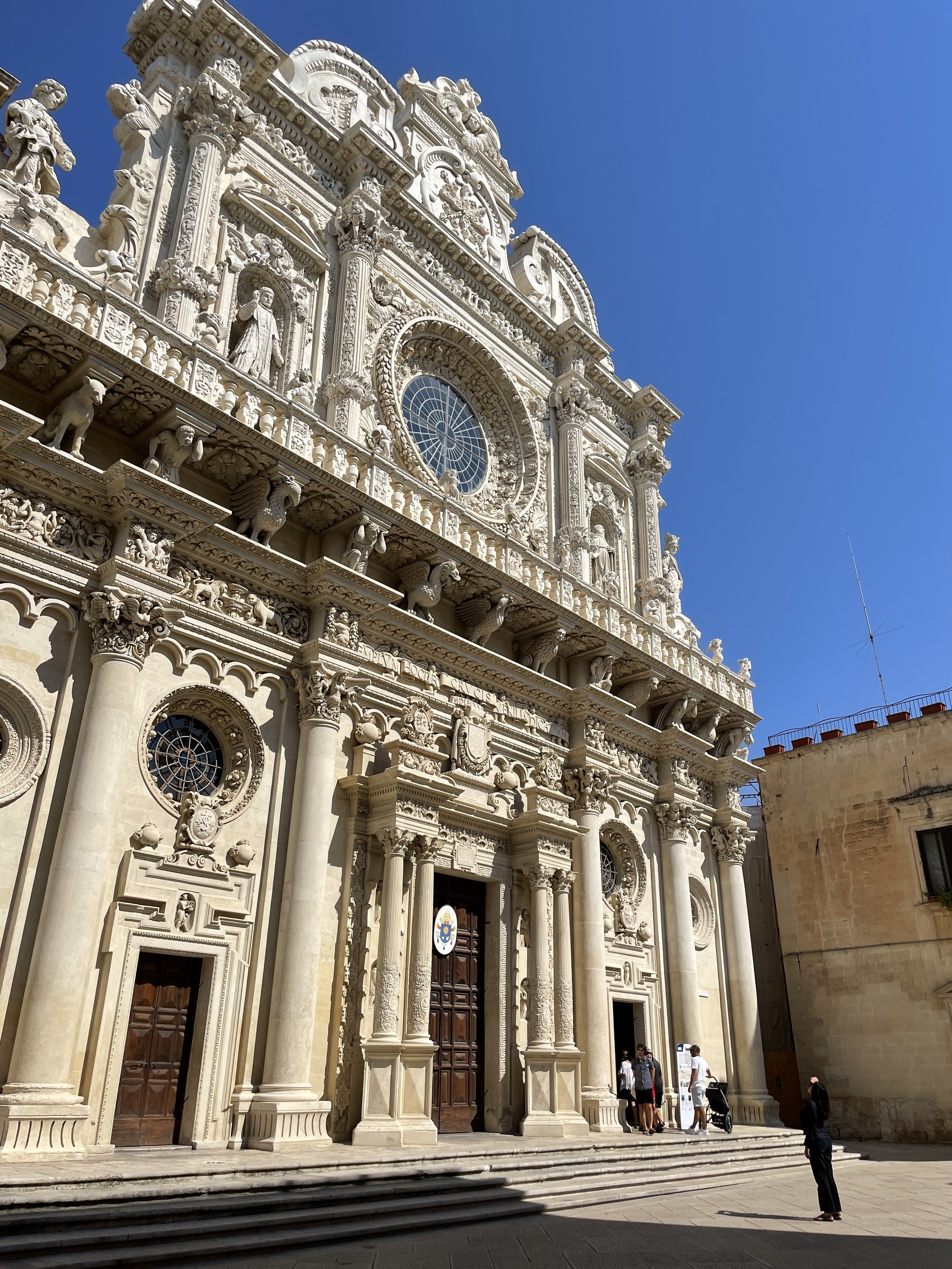
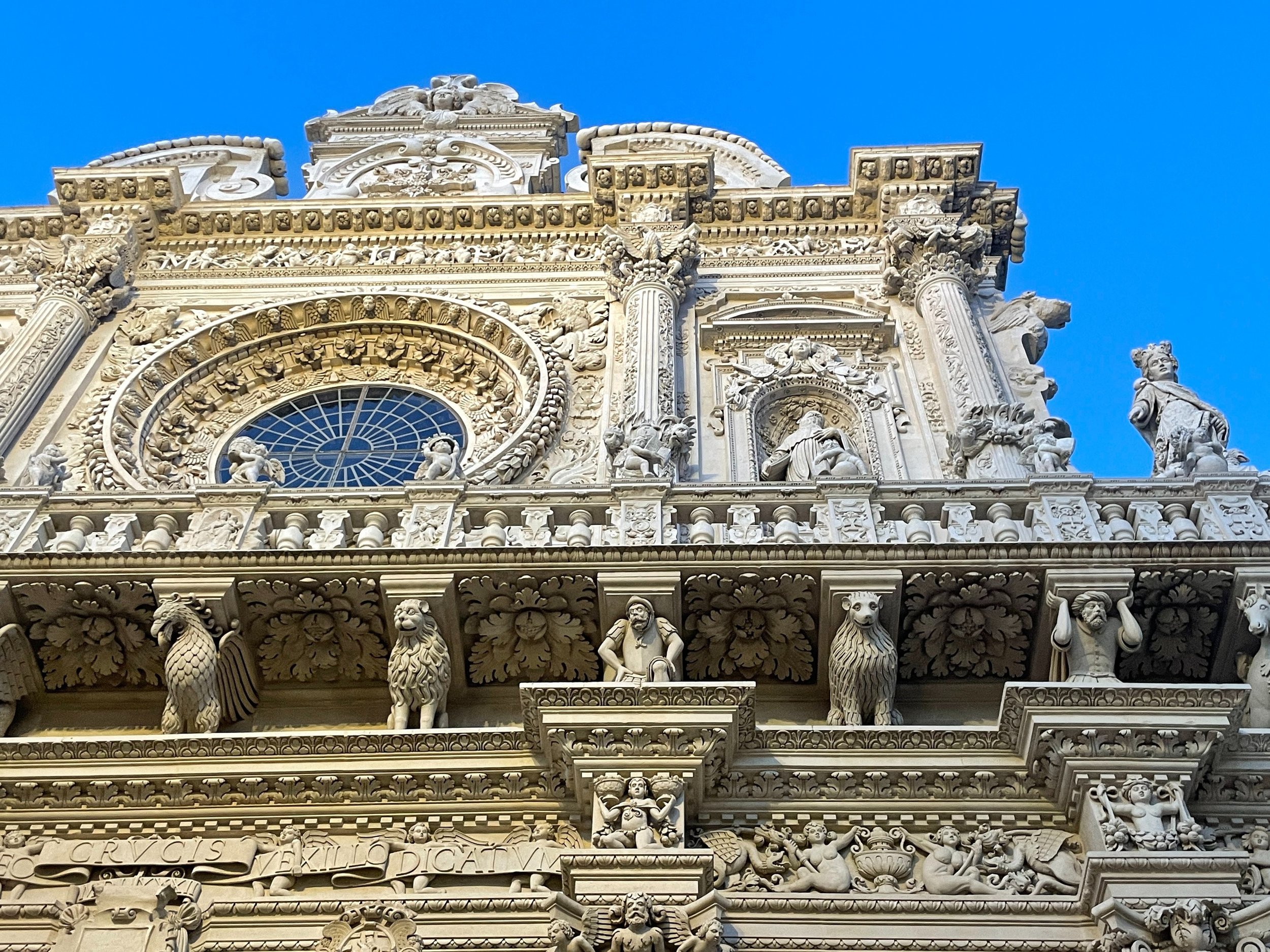
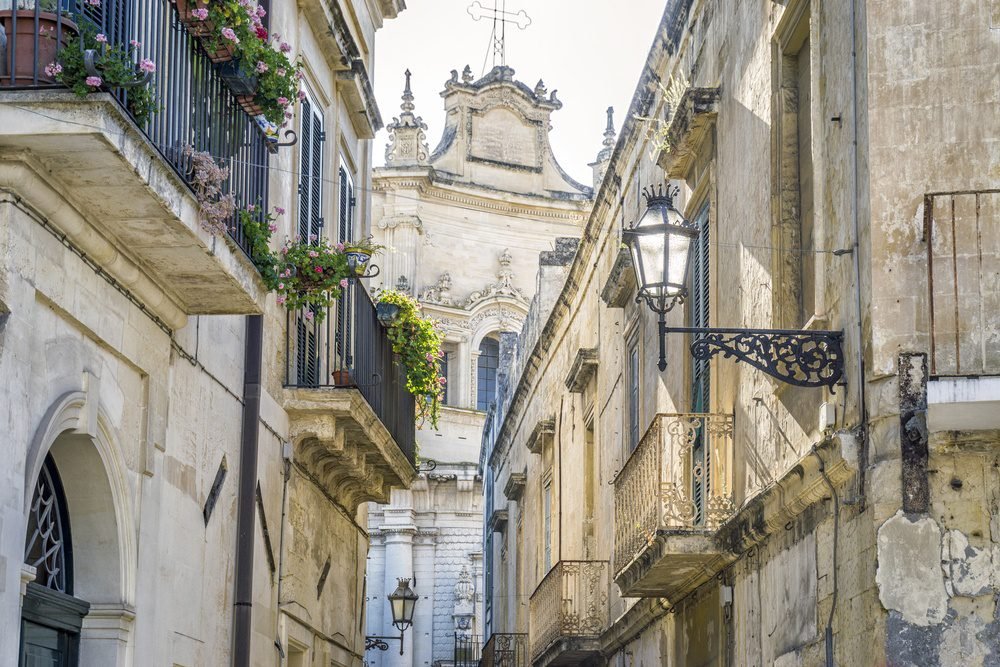
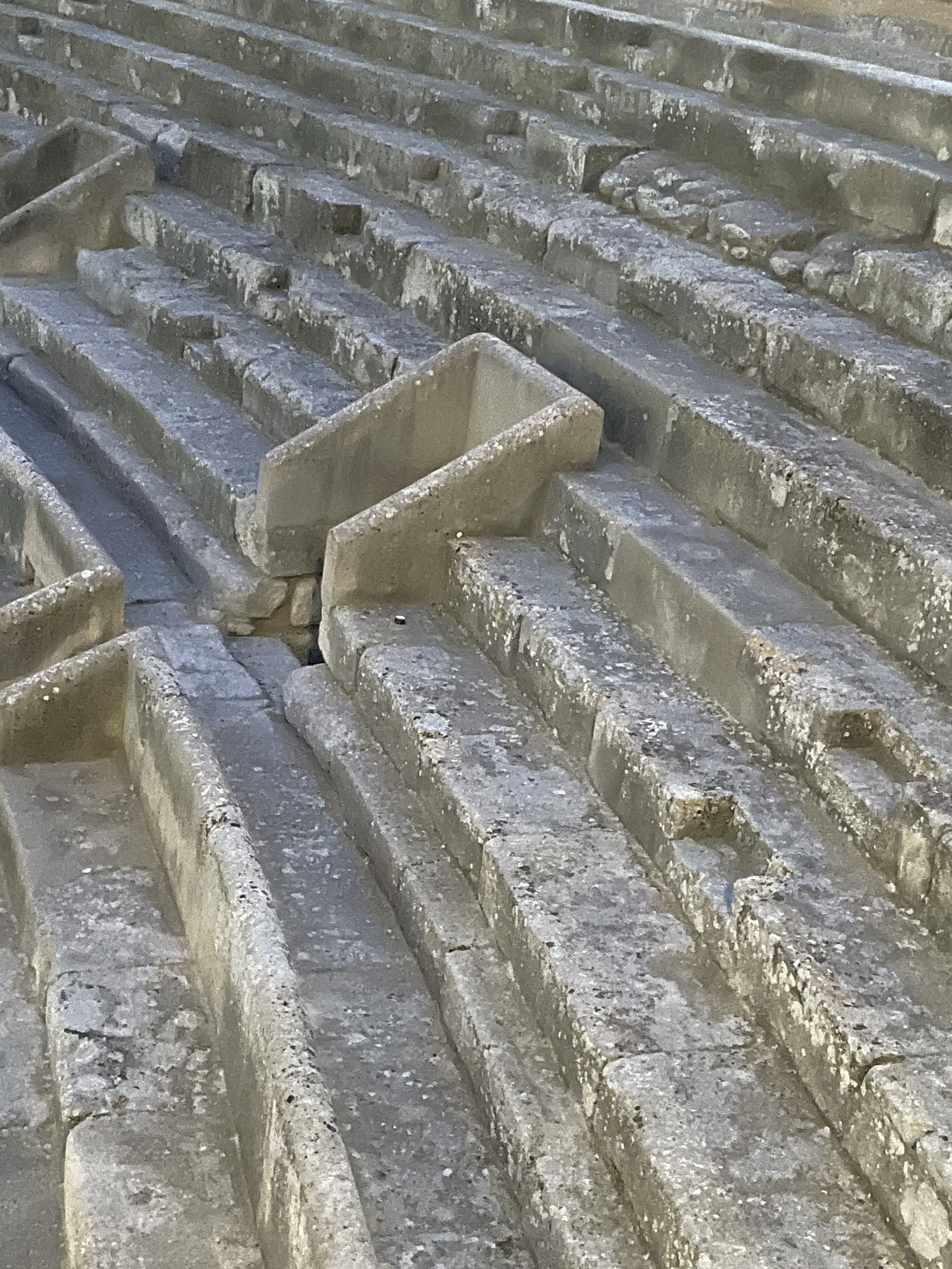
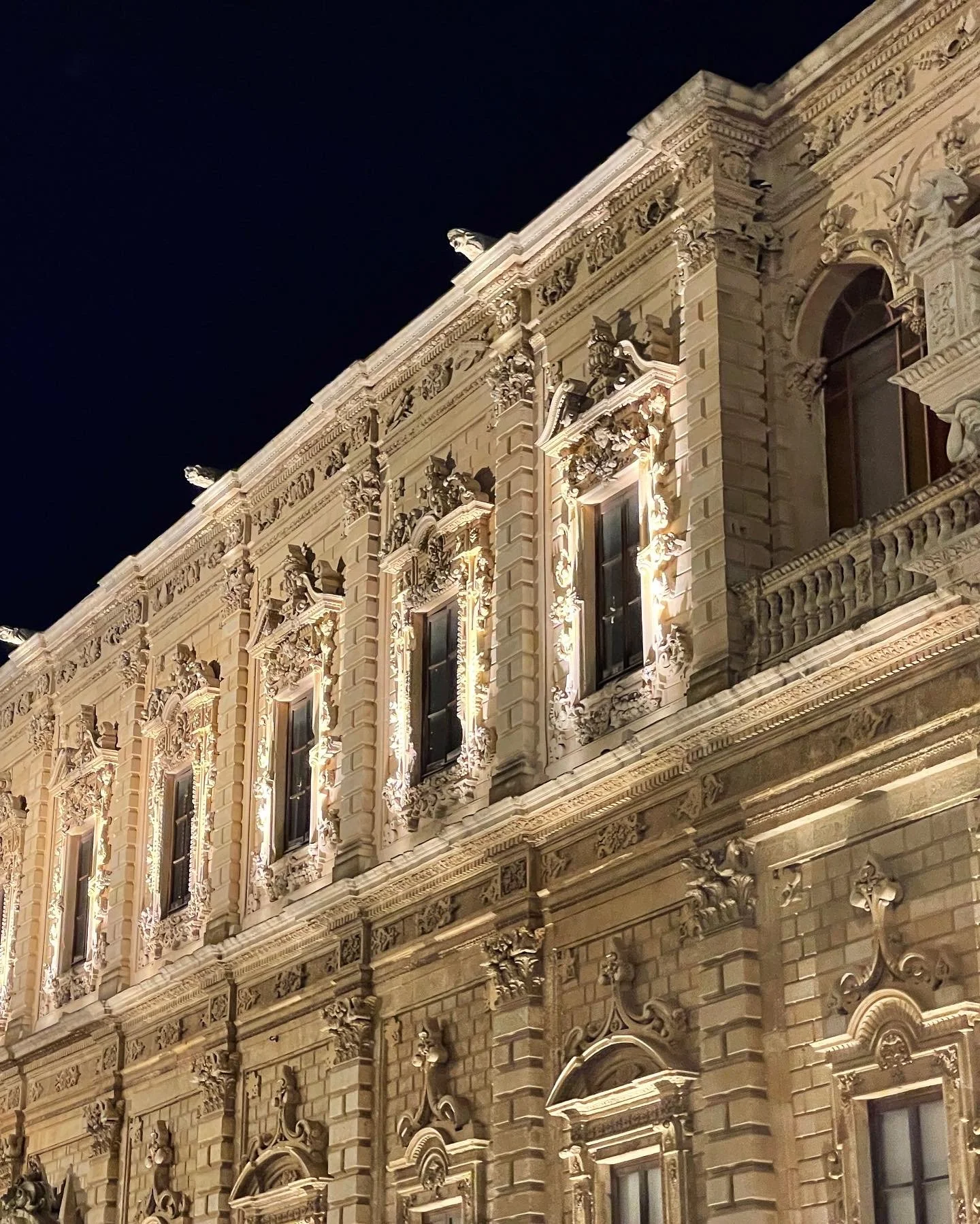
We spent so much time at the beach during our stay in the Bari/Brindisi areas (A Week in Puglia – Part I) that we decided not to venture beyond Lecce during our three-day stay. That said, if you’re inclined to explore, Gallipoli and Otranto make excellent day trips.
Masseria Mantateluré
The hours spent researching where to stay in Lecce seemed endless in the weeks before our trip, but the moment we checked into Masseria Mantateluré, we knew the effort had been worth it.
Ideally located within a ten-minute walk of the city’s most important landmarks, this restored 16th-century palazzo lives up to its name—“King’s Mantle” in the local dialect. Designed and owned by Marco Cimmino, the property reflects his personal vision: chic, understated, and cozy. The attention to detail is unmistakable, from the breakfast room’s serving table to the custom cabinets in the lobby to the recessed Bang & Olufsen sound system. Old and new are seamlessly fused here—my favorite kind of design.
On arrival, we were warmly welcomed by property manager Marta Nocco, whose genuine regard for our well-being set the tone for our stay. Behind her, a woman was already preparing pastries and desserts we would later savor. That small detail spoke volumes. Marco himself, an avid baker (and owner of the nearby restaurant Pescheria Con Cottura), has imbued the hotel with that passion, creating a space that feels less like a hotel and more like a home.
Even at the peak of a sweltering summer, the garden was a haven. Our room, accessible through a romantic exterior foyer, was spacious and elegant, with a spa tub and a sitting area. With just five additional rooms and three apartments, Mantateluré feels intimate by design. One note: to preserve its calm and welcoming atmosphere, children under eleven are not accepted.


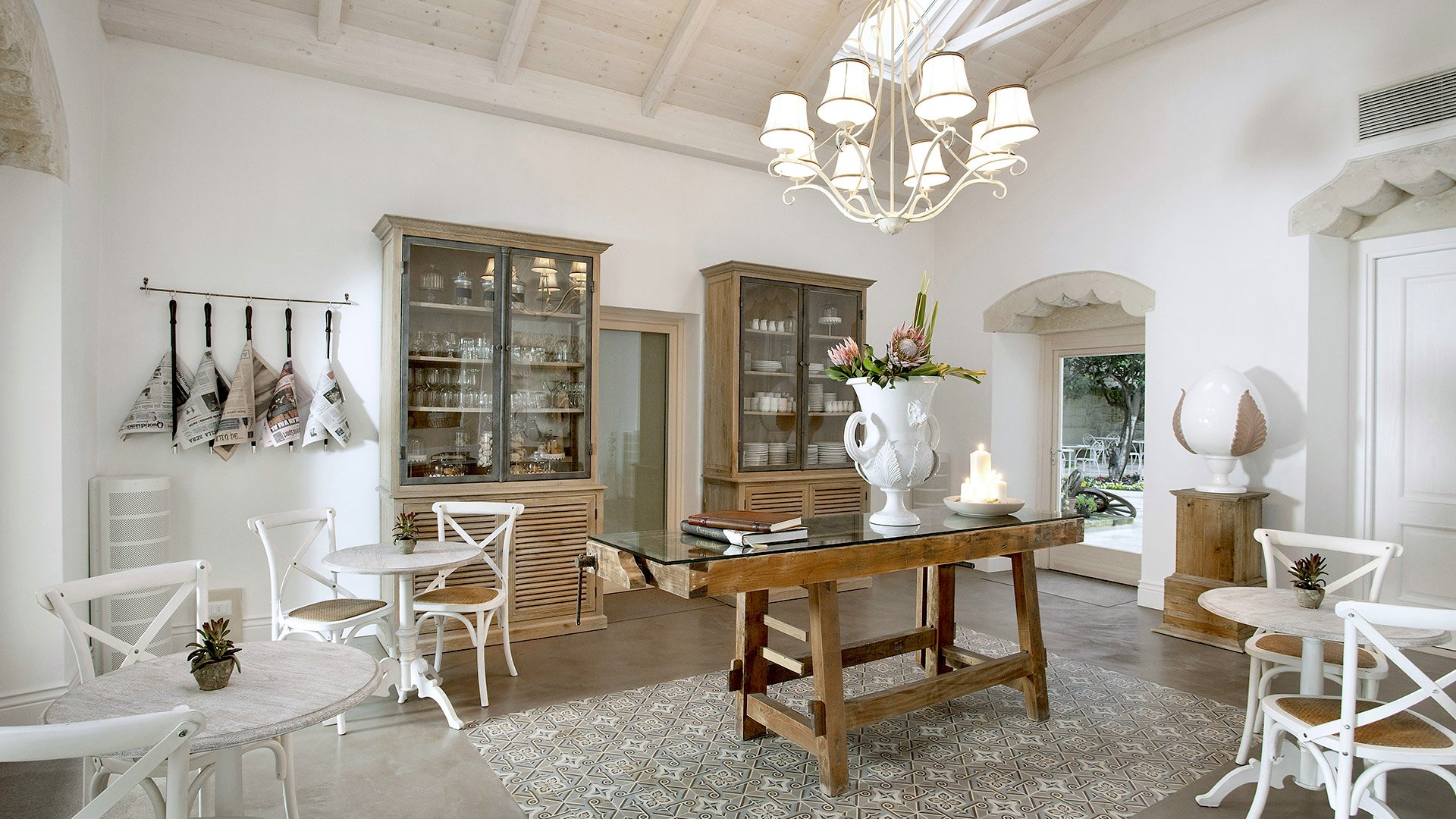
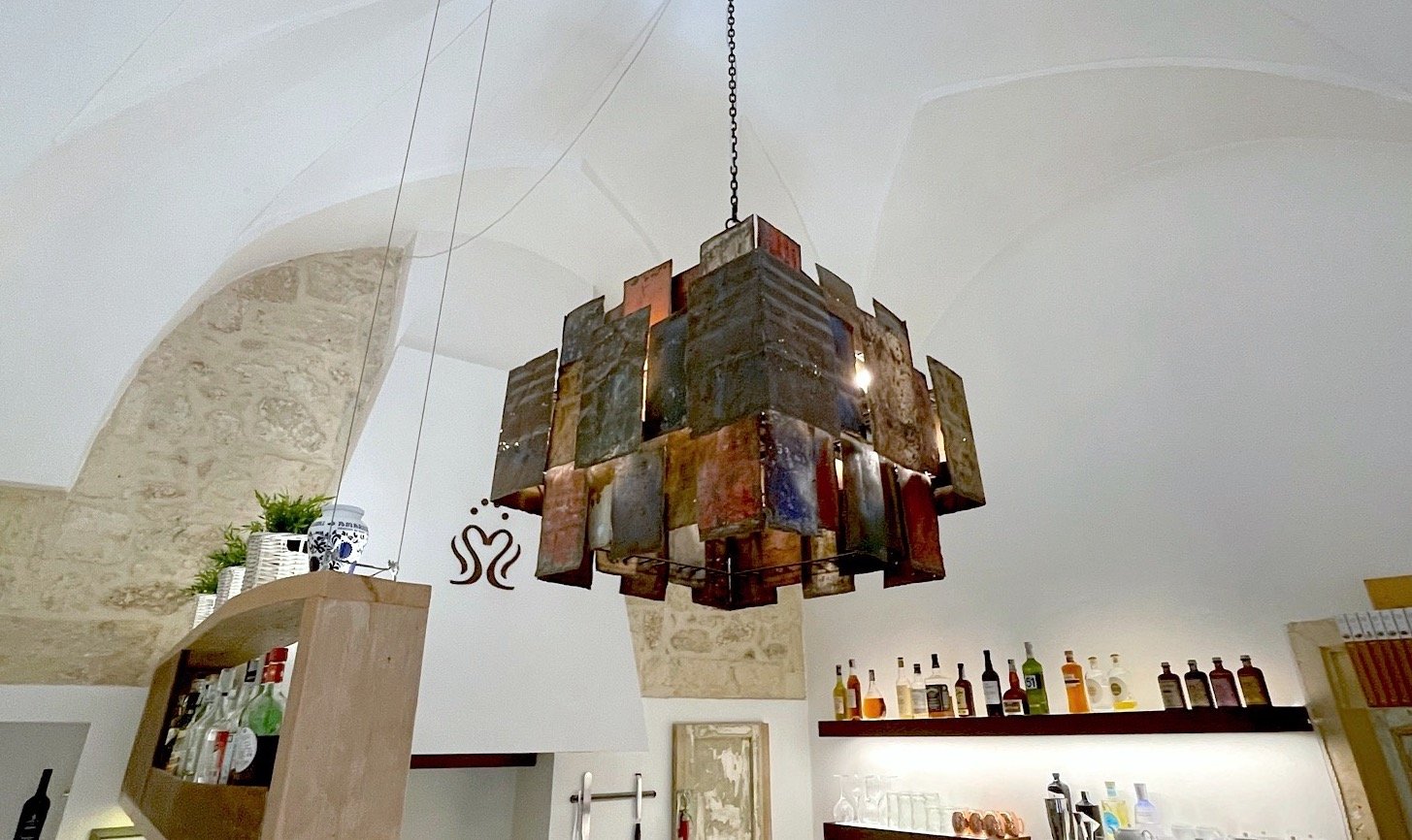

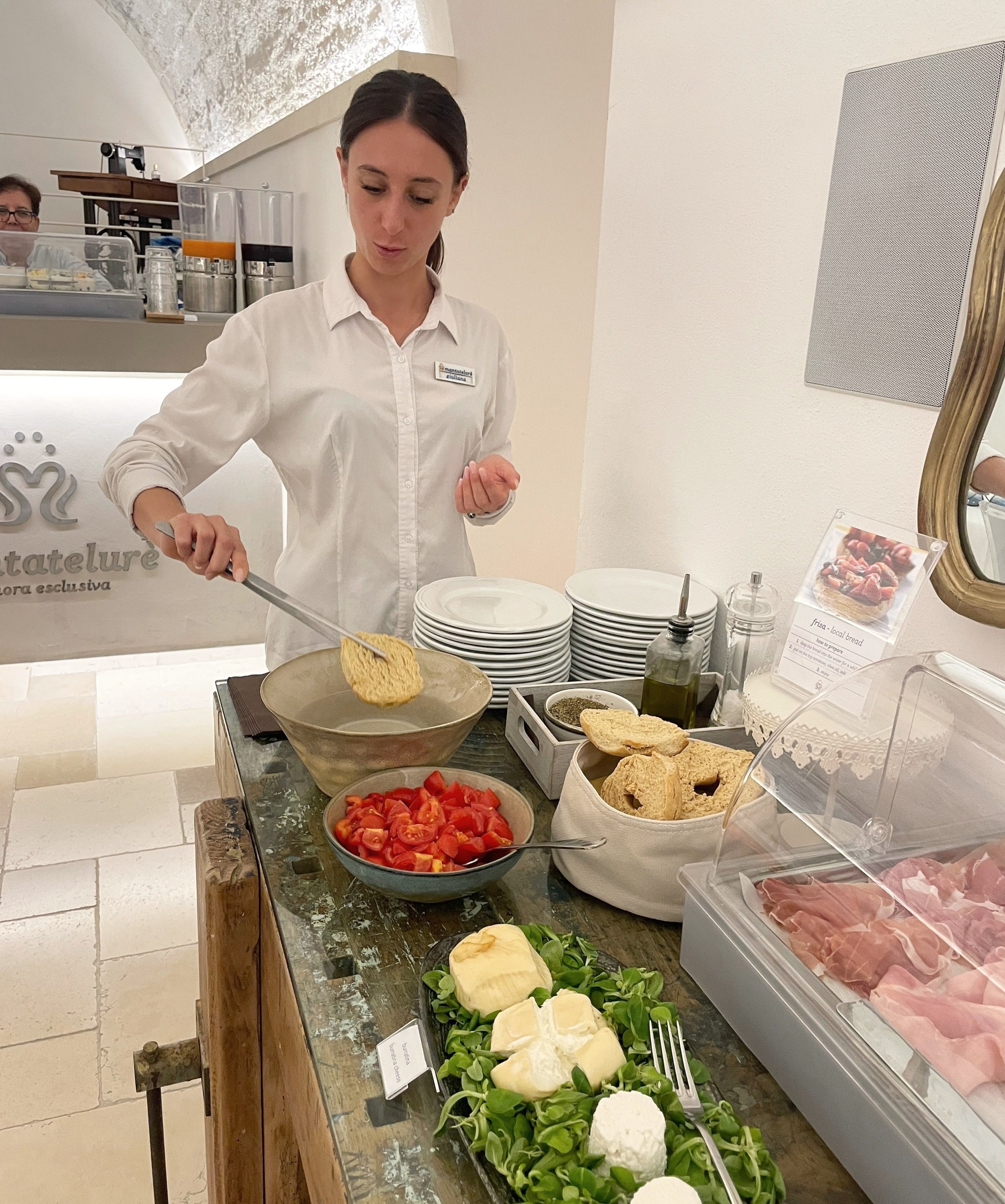
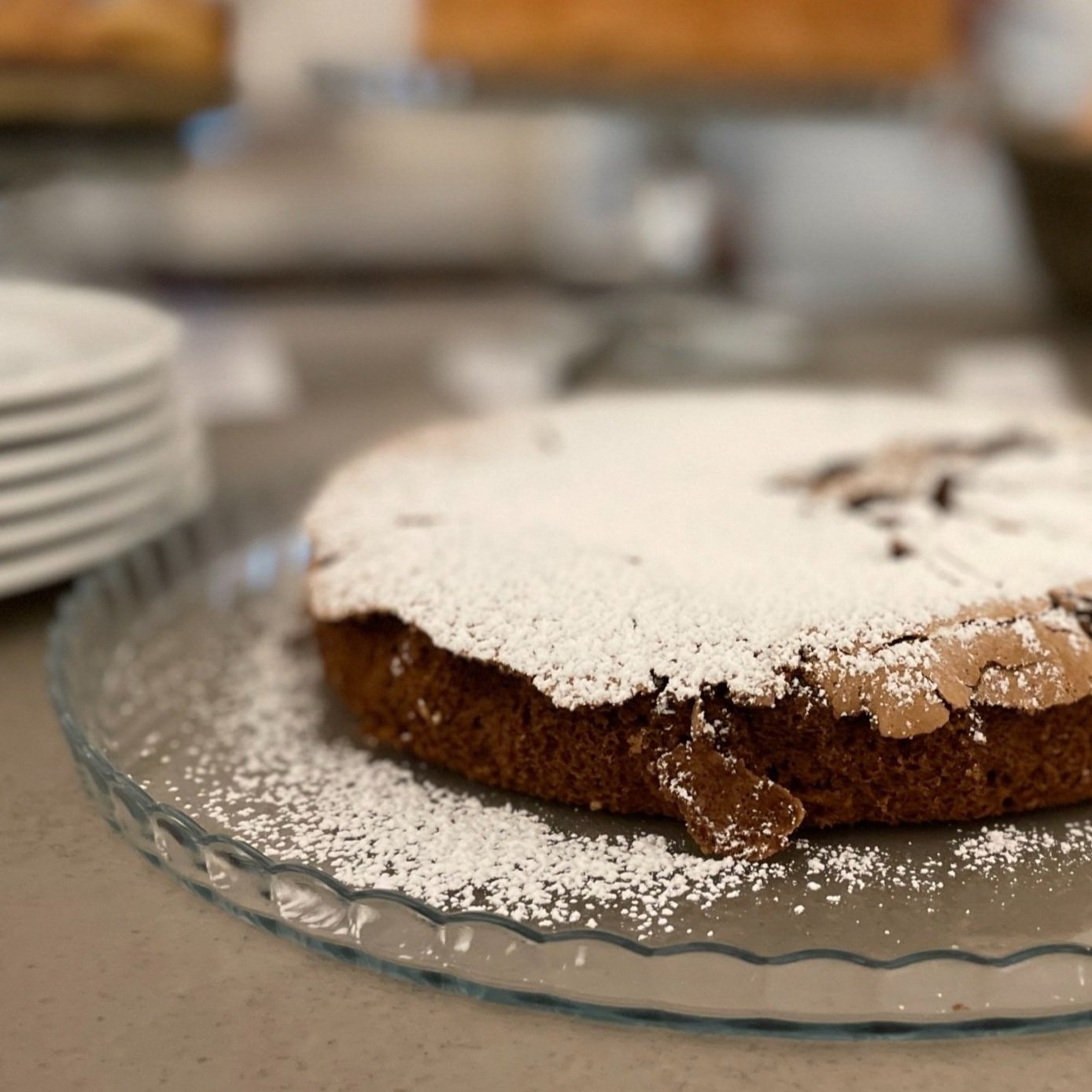

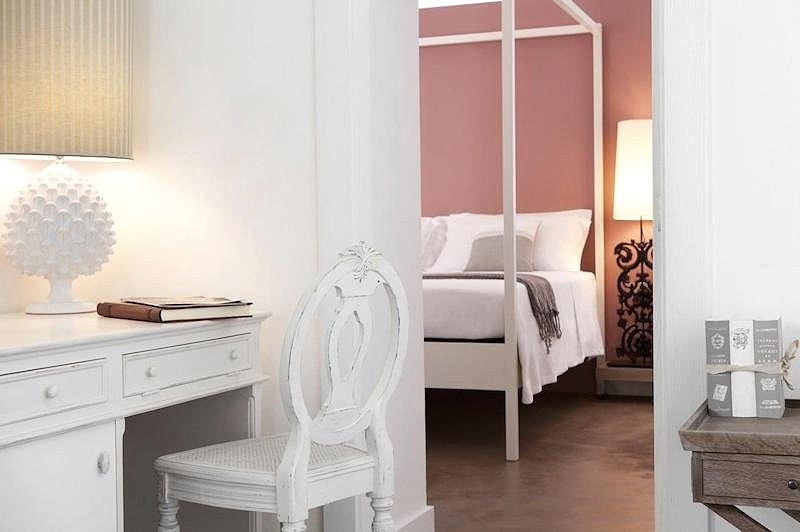


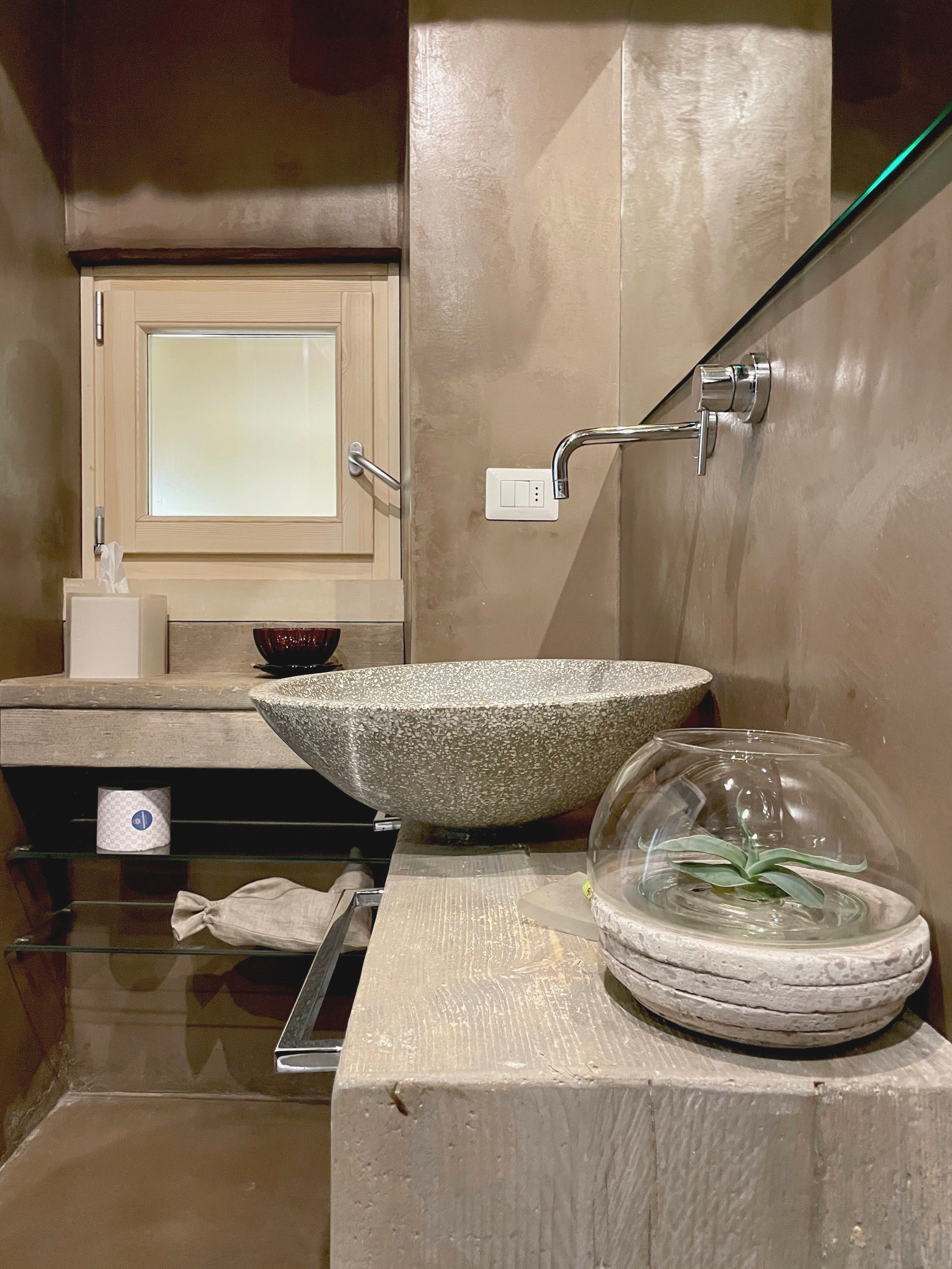

DINING
It is not difficult to find excellent cuisine in Puglia, where food is straightforward, seasonal, and deeply rooted in local tradition. With the longest stretch of coastline in Italy, it’s no surprise that seafood takes center stage.
Ambiance is as essential to me as cuisine, while for my husband—born and raised in Rome—the food itself is everything. The good news: in Puglia, neither of us was disappointed.
La Locanda sul Porto in Monopoli
This charming seaside restaurant with outdoor seating serves both raw and cooked seafood, along with several pasta dishes featuring the catch of the day. We chose the latter, and it was every bit as delicious as it was beautiful.La Taverna di Umberto, Fasano
What struck me here was the atmosphere. One of the things I love most about dining in Italy, especially in summer, is watching generations gather under the night sky—children, teens, and adults sharing a timeless feast without a care for the clock. At La Taverna, that same ease permeated the evening, the staff moving with grace and the food living up to the setting.Osteria bell’Italia
Quaint yet trendy, this backstreet gem blends local and international gastronomy with a modern twist. Though the restaurant was at full capacity and service lagged, any impatience dissolved once the food arrived. I highly recommend it for those seeking something distinct.Bina Ristorante
Housed in an 18th-century building with soaring cross-vaulted ceilings, Bina offers a seamless fusion of past and present. The sleek white décor frames exquisite cuisine: handmade pastas, meats, fish, tartare, and refined desserts. With its extensive wine list and impeccable presentation, its dining is elevated.Il Vico del Gusto
Ideally located just steps from the Basilica di Santa Croce, Il Vico del Gusto delights food lovers with seared octopus, tuna tartare, and tagliolini with local fish. While the food and wine were superb, the frenetic staff energy—darting from table to table—detracted from what could have been a flawless evening.
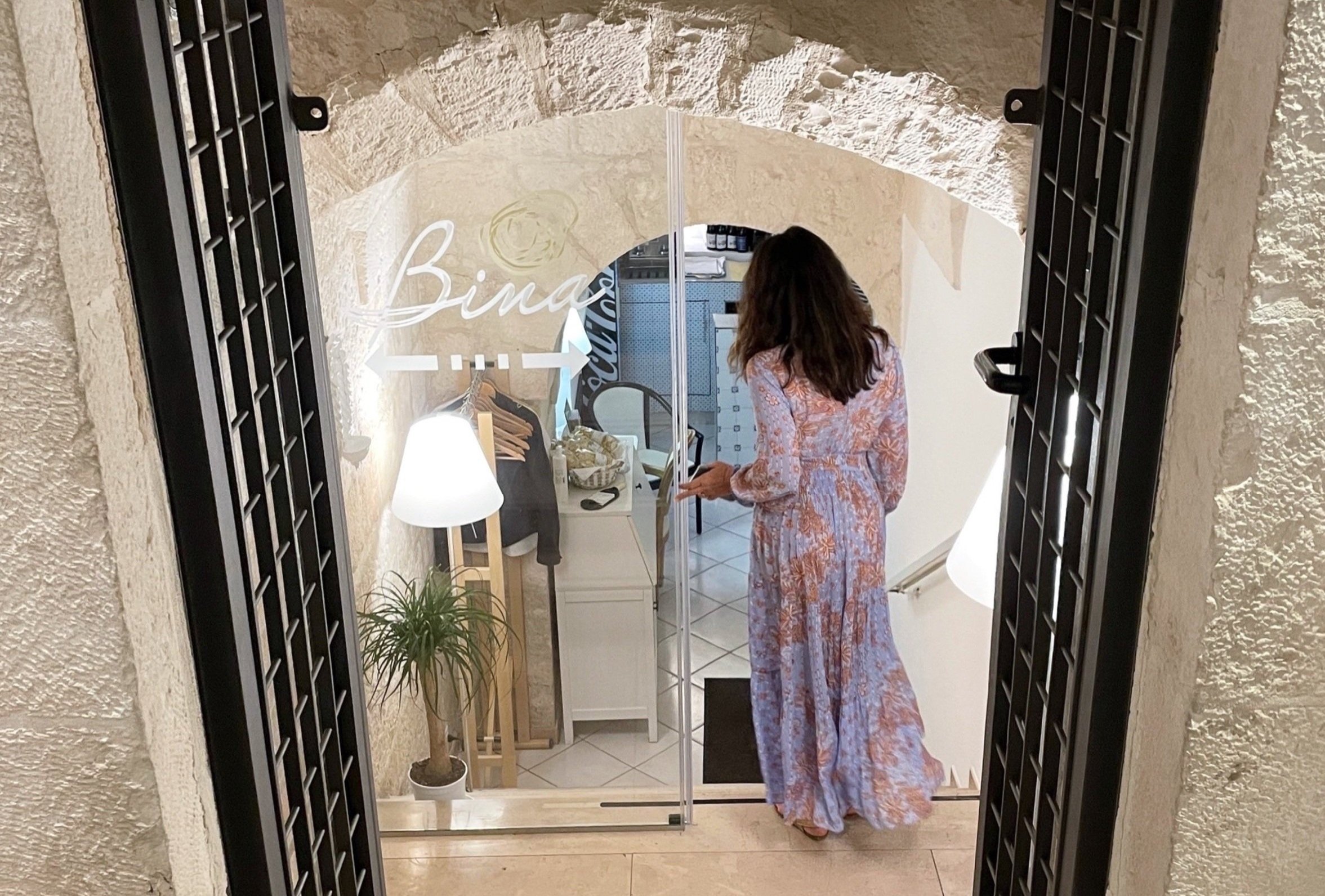
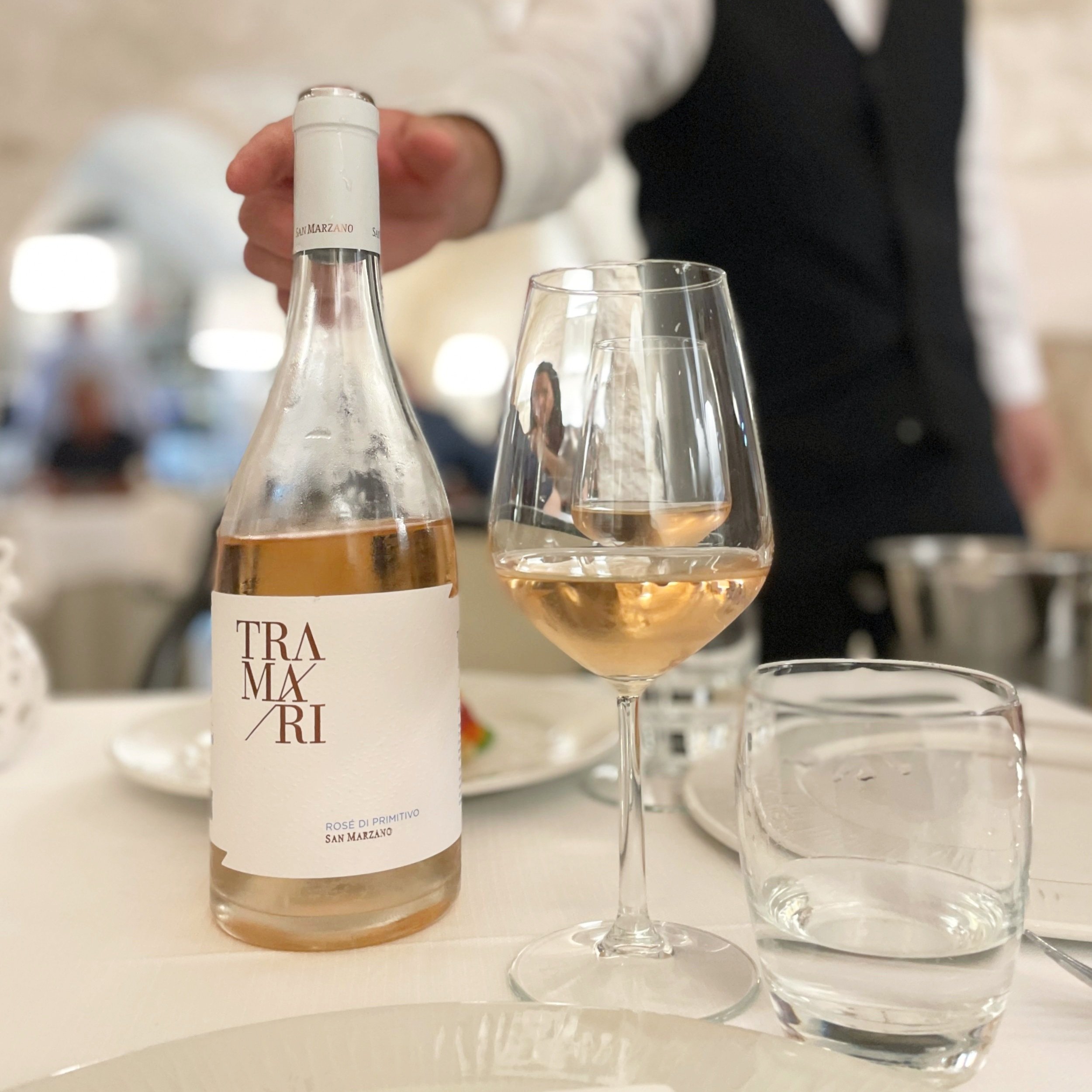



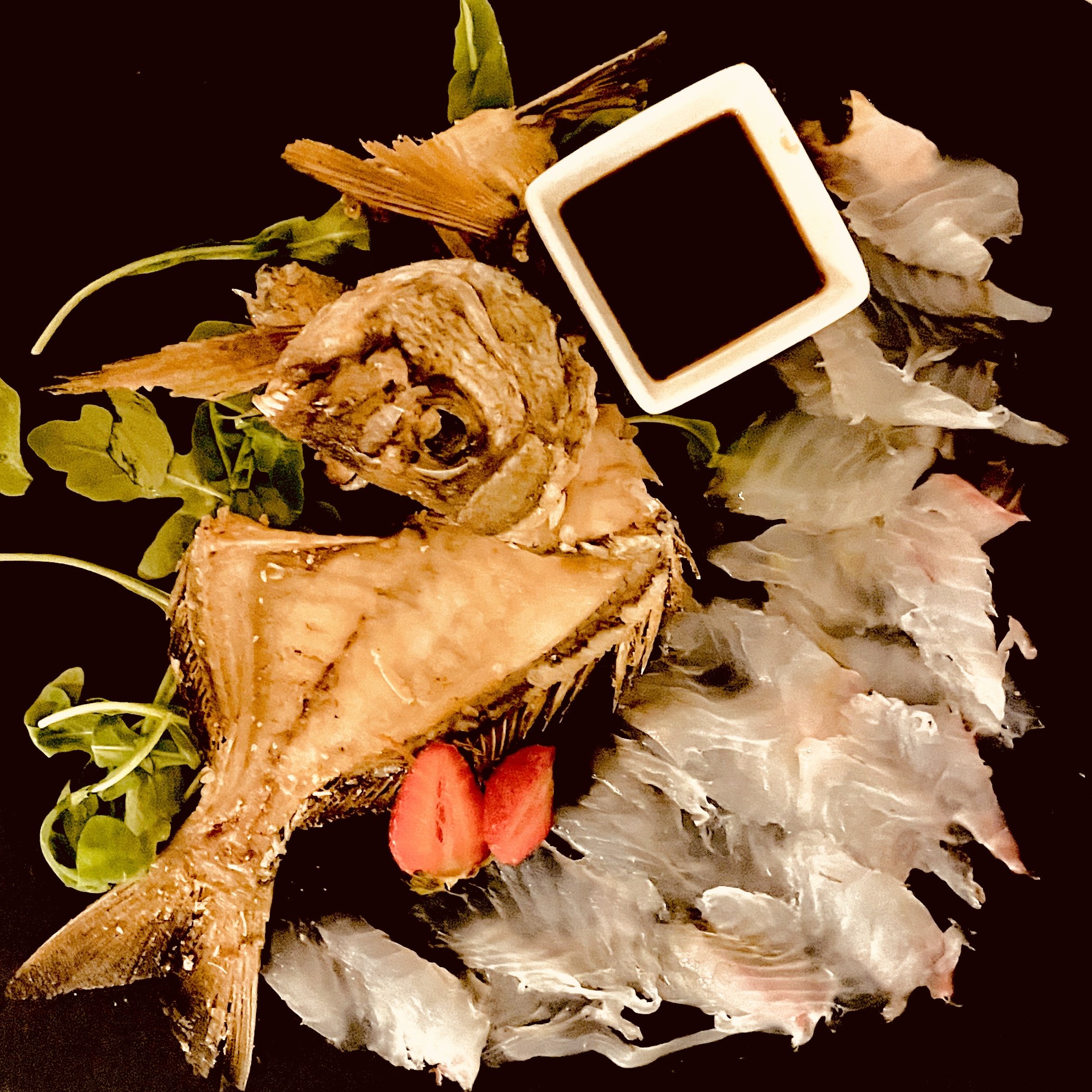
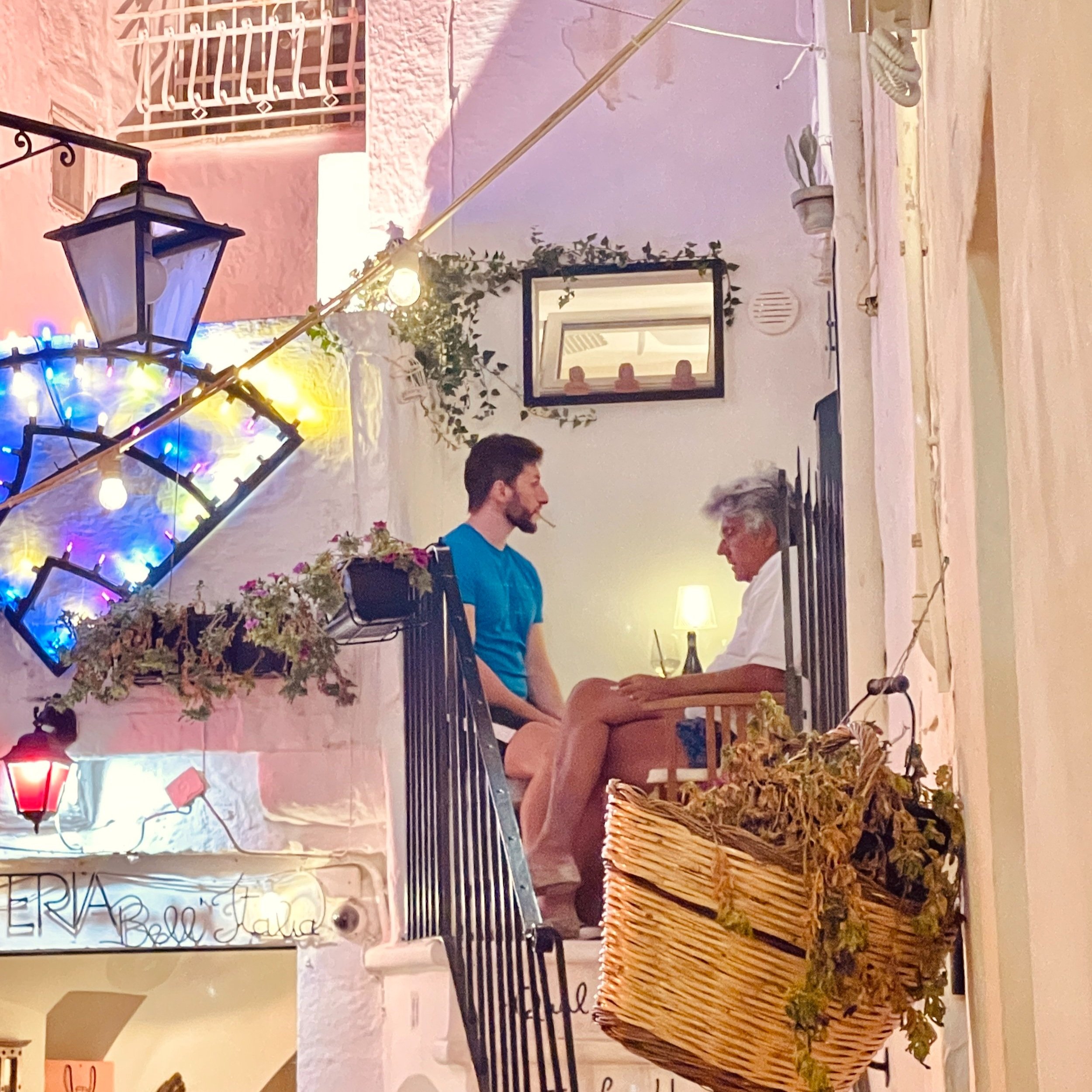
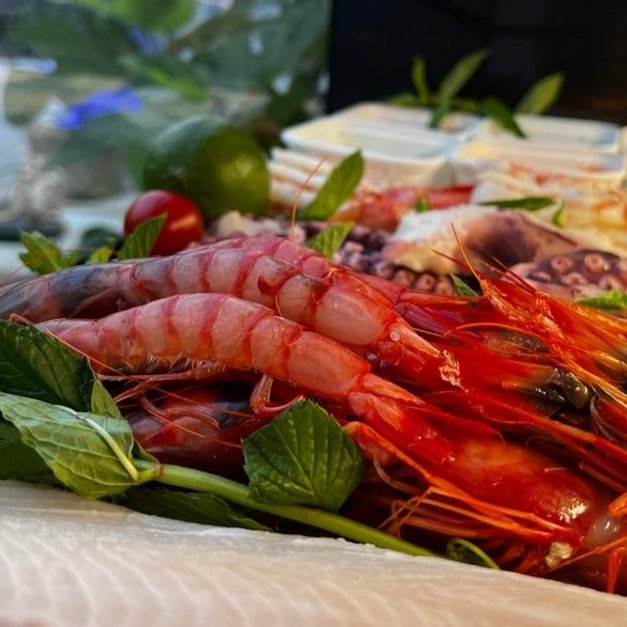
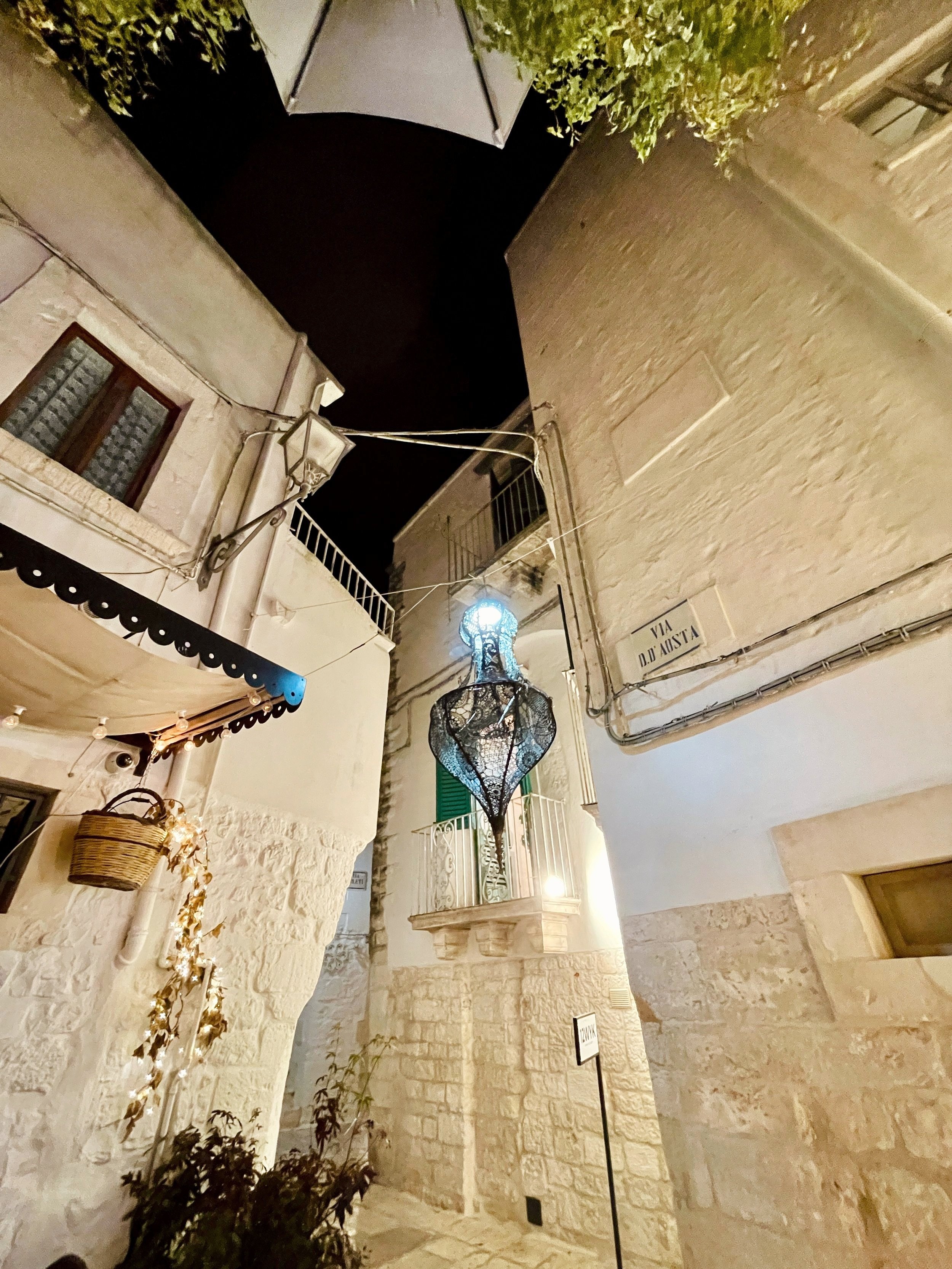

I hope these notes help guide your own journey through Puglia, a region as rich in history as it is in flavor. Buon viaggio!
Photos: property of Designs by Alina.



